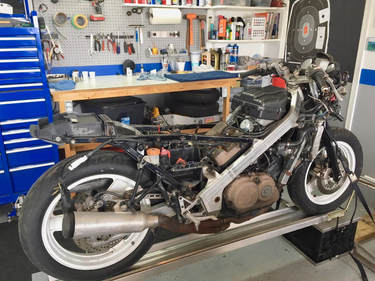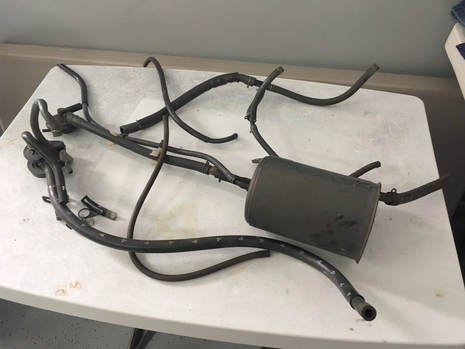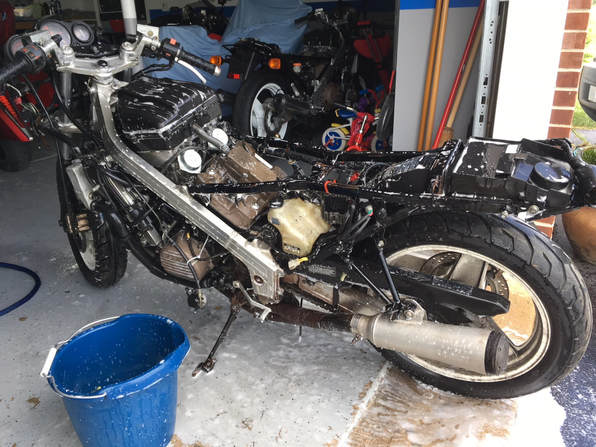In any case, I'll go through the steps that I take when beginning a rescue of a 32-year old Honda VFR. First up is a soapy bath and general degreasing. This is messy work, so it's always best to start with most of the crud removed. Then it's onto the service rack.

(Below) I start with radiator removal. I do this because I know that I'll be doing a valve adjustment check and having the radiator completely out of the way makes the process much easier. Drain the coolant via the lower radiator hose, remove the two hoses, unbolt the upper and lower mounting bolts, unplug the fan connector and remove the radiator from the left side.
(click on any of the small images to enlarge)

Next up, valve clearance check, compression check and carb cleaning.





















 RSS Feed
RSS Feed